TL;DR: What this guide covers and the bottom line
-
Create a free trial account with an AI voice platform and confirm commercial terms.
-
Select or clone a voice, paste your script, and export two variants.
-
Run a 7 to 14-day A/B test in a small paid placement.
-
Measure CTR, listen-through rate, and RPM, then pick the winning variant to scale.
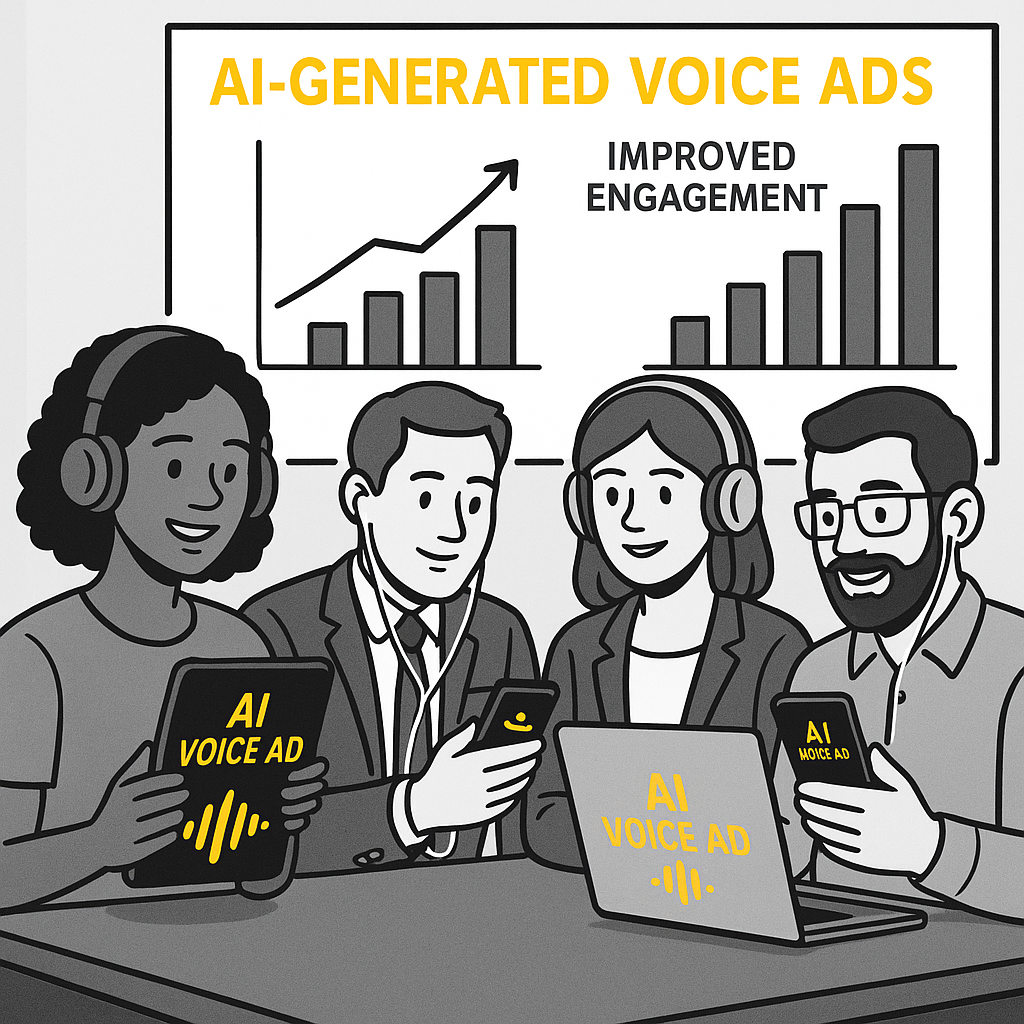
What are AI Voice Ads? Quick primer
How they differ from traditional voiceovers
Common delivery channels
-
Podcasts, as host-read or dynamically inserted spots.
-
Streaming music or radio platforms, programmatic placements.
-
In-app audio, including games and social apps.
-
OTT (over-the-top) streaming ads inside connected TV apps.
Who benefits most
How AI Voice Ads Work (simple technical walkthrough)
Core building blocks of TTS and audio ads
Why neural TTS changed the game
Voice cloning and personalization
Compact production workflow (script to ad)
-
Script: write short, attention-first copy sized for ad length.
-
SSML: mark pauses, emphasis, and fallback pronunciations.
-
Voice selection: pick a neural voice or cloned profile.
-
Render: generate audio via the TTS engine or API.
-
Deliver: export MP3/WAV and integrate into ad server or DAW.
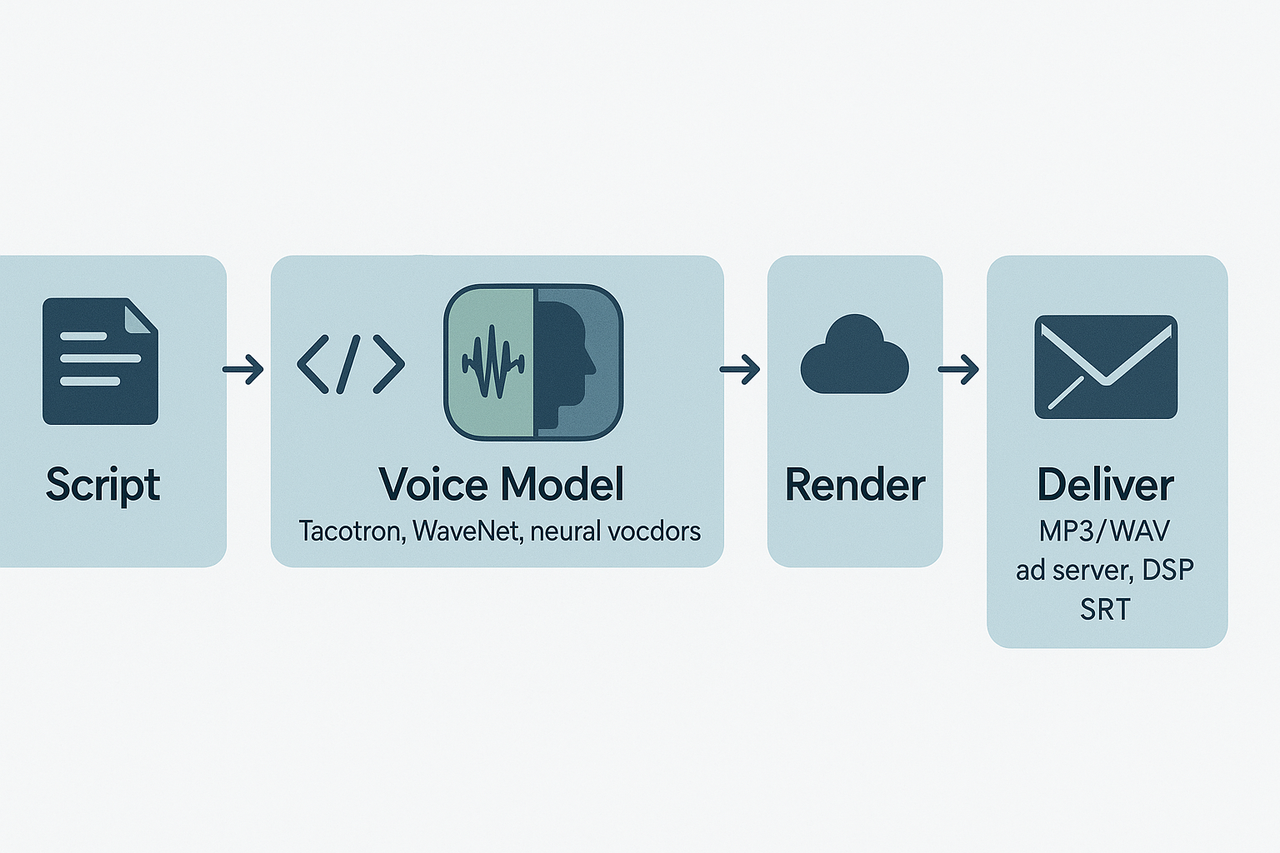
Why AI Voice Ads Boost Engagement & RPM — Evidence and metrics
-
View or listen completion rate (how many users hear the full ad)
-
Click-through rate (CTR) for interactive ads
-
Time on creative and post-click engagement
-
CPM and RPM (cost or revenue per thousand impressions)
Why does this lift RPM and CPM?
Simple A/B test framework to measure RPM uplift
-
Hypothesis: Personalized voiceovers in the local language increase RPM by X percent.
-
Variables: Voice type (generic vs localized), script length (15s vs 30s), CTA placement (mid vs end).
-
Metrics: RPM, completion rate, CTR, conversion rate, CPI (cost per install or action).
-
Sample & timing: Run each variant with N >= 10,000 impressions or 2 weeks, whichever is longer.
-
Analysis: Compare RPM delta and attribute lifts to creative variables using uplift and confidence tests.
DupDub for Ad Production — Features, workflow, demo & implementation plan
End-to-end ad production workflow
-
Script writing: Prepare a short, persuasive ad script with clear timing cues.
-
Voice selection/cloning: Choose a voice from the catalog or upload a sample to clone a custom voice.
-
Voice synthesis: Use the selected voice to generate a natural-sounding voiceover.
-
Localization: Translate the script and generate dubbed versions with matching timing.
-
Subtitles: Export SRT subtitle files for platform compatibility.
-
Mixing & effects: Add music, sound effects, and adjust audio levels.
-
Export & QA: Export in multiple formats (MP3, WAV, SRT). Review for content and compliance.
Key features advertisers rely on
-
Text-to-Speech: Access to 700+ voices and 1000+ emotional styles.
-
Voice Cloning: Create unique brand or influencer voices.
-
Support for 90+ languages: Expand campaigns globally with native-sounding voiceovers.
-
Subtitles export: SRT format for seamless social and OTT integration.
-
Audio formats: Export assets ready for programmatic, broadcast, and podcast platforms.
-
API integration: Automate batch generations and asset delivery workflows.
Export guides for ad platforms
-
MP3 (128 kbps): Ideal for streaming and digital.
-
WAV (44.1 kHz): Suitable for broadcast-quality distribution.
-
SRT Subtitles: Add accessibility and meet social ad requirements.
-
Metadata: Use consistent naming with campaign and language codes.
Implementation and demo plan
-
Select one campaign script (15s and 30s).
-
Generate two versions: TTS voice and brand voice clone.
-
Localize into one target language.
-
Export MP3, WAV, SRT.
-
Run 7-day A/B test and monitor CTRs and engagement.
Privacy, automation, and security tips
-
Voice rights: Only clone voices with explicit written consent.
-
Asset security: All uploads and cloned data are encrypted.
-
Automation: Use APIs to trigger generation workflows from a DAM or CMS.
-
QA step: Always review AI-generated content before publishing.
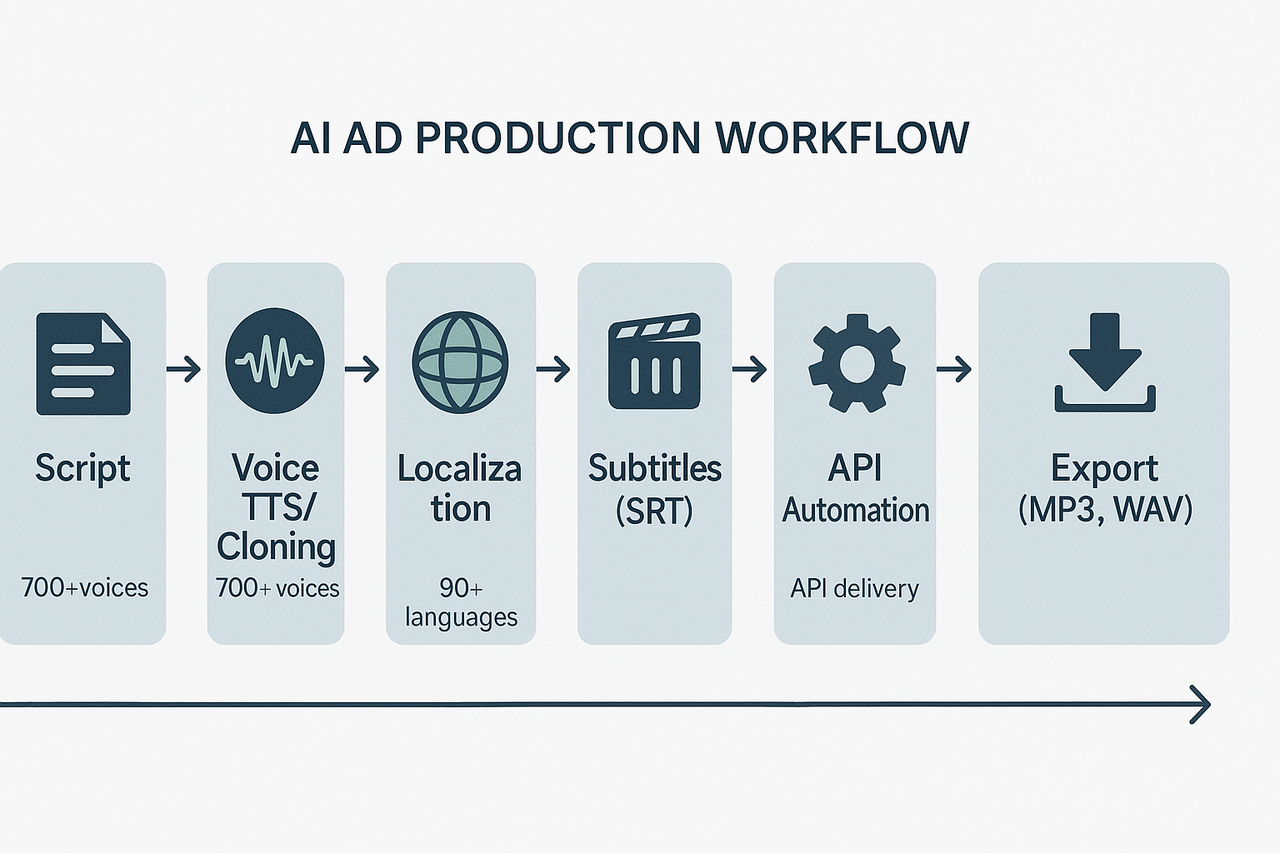
Creative best practices — Voice choice, script writing & localization
Pick the right voice
-
Match age, gender, and accent to your target demo.
-
Use distinct voices for different funnel stages: energetic for awareness, trusted for conversion.
-
Limit unique voices per campaign to keep brand consistency.
Nail tone and pacing
-
Aim for clear phrasing, not monotone.
-
Add small breaths or micro-pauses before CTAs.
Write hooks and CTAs that convert
-
Hook examples: "Save 20 minutes today"; "Hear faster results now."
-
CTA examples: "Get started free"; "Claim your offer—limited spots."
Scale localization without sounding robotic
-
Checklist: cultural check, natural filler words, localized pacing, native QA.
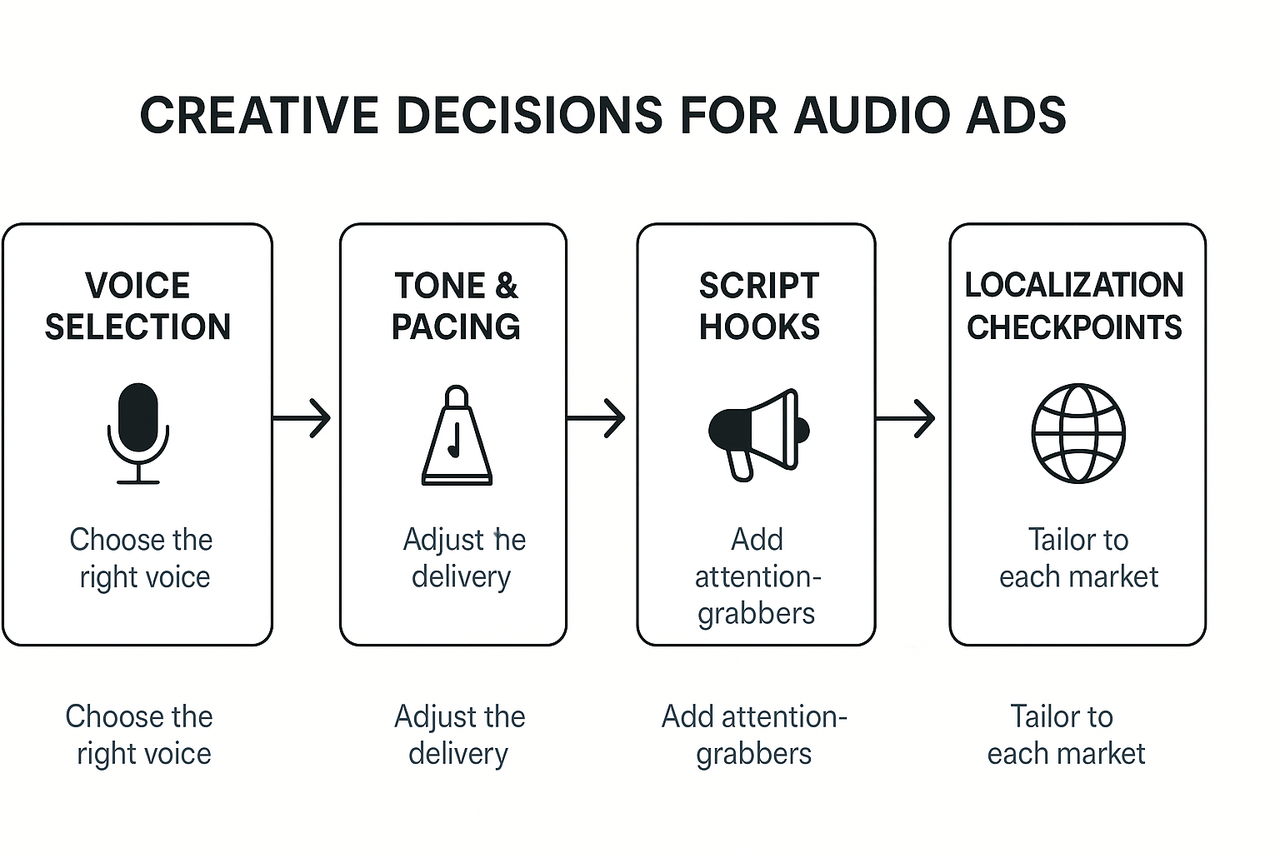
Vendor comparison: DupDub vs other top AI voice platforms
Key decision criteria
Vendor snapshot table
|
Attribute
|
DupDub
|
Specialized cloning vendors
|
Cloud TTS API
|
Enterprise dubbing suites
|
|
Voice quality
|
High, many expressive styles
|
Very high for individual clones
|
Varies by model
|
High for broadcast use
|
|
Languages & accents
|
90+ languages and accents
|
Limited to major languages
|
30–100 depending on provider
|
Wide, often focused on core markets
|
|
Voice cloning
|
Yes, multi-language clones
|
Core capability, top fidelity
|
Usually limited or absent
|
Available, with enterprise controls
|
|
API & automation
|
API support, low latency
|
API may exist, focused on cloning
|
Strong APIs for devs
|
API plus DAM integrations
|
|
Workflow & localization
|
Unified text-to-speech, dubbing, subtitles
|
Clone-first workflow
|
Developer-first TTS calls
|
End-to-end localization pipelines
|
|
Enterprise features
|
Role-based access, encryption
|
Varies by vendor
|
Basic IAM, billing tools
|
Strong compliance and SLAs
|
When to pick this platform
Legal, accessibility & ethical checklist for AI voice ads
Disclosure and consent
-
State sponsorships and paid endorsements are clear and early in the spot.
-
Get written consent before cloning a real person’s voice.
-
Offer opt-outs when using consumer data for personalization.
Voice rights and licensing
-
Confirm ownership or license for every voice used.
-
Keep signed voice release forms for talent and clones.
-
Audit third-party voice libraries for commercial rights.
Accessibility
-
Provide accurate captions (SRT) for all audio ads.
-
Use clear speech, normal pace, and minimal jargon.
-
Meet WCAG principles for equivalent alternatives.
Bias, inclusion and records
-
Test voices across demographics to avoid stereotyping.
-
Include diverse, authentic-sounding options for casting.
-
Retain logs: voice files, consents, scripts, and release forms for audits.
Measurement, case studies & 3 sample scripts to test (incl. RPM-focused A/Bs)
Measurement playbook: what to track and why
Mini case study: anonymized result
Three ready-to-run scripts
RPM-focused A/B test template
-
Hypothesis: a localized, expressive voice will raise RPM by X percent.
-
Sample size guidance: aim for 50,000 impressions per arm to detect ~10 percent RPM lift. For larger lifts (20–25 percent), 10,000 impressions can suffice.
-
Test length: run for at least two full ad cycles or 2 weeks.
-
Analysis: compute RPM per arm, 95 percent confidence intervals, and run a z-test for difference in means. Check secondary lift in LTR and conversions.
How to interpret RPM uplift
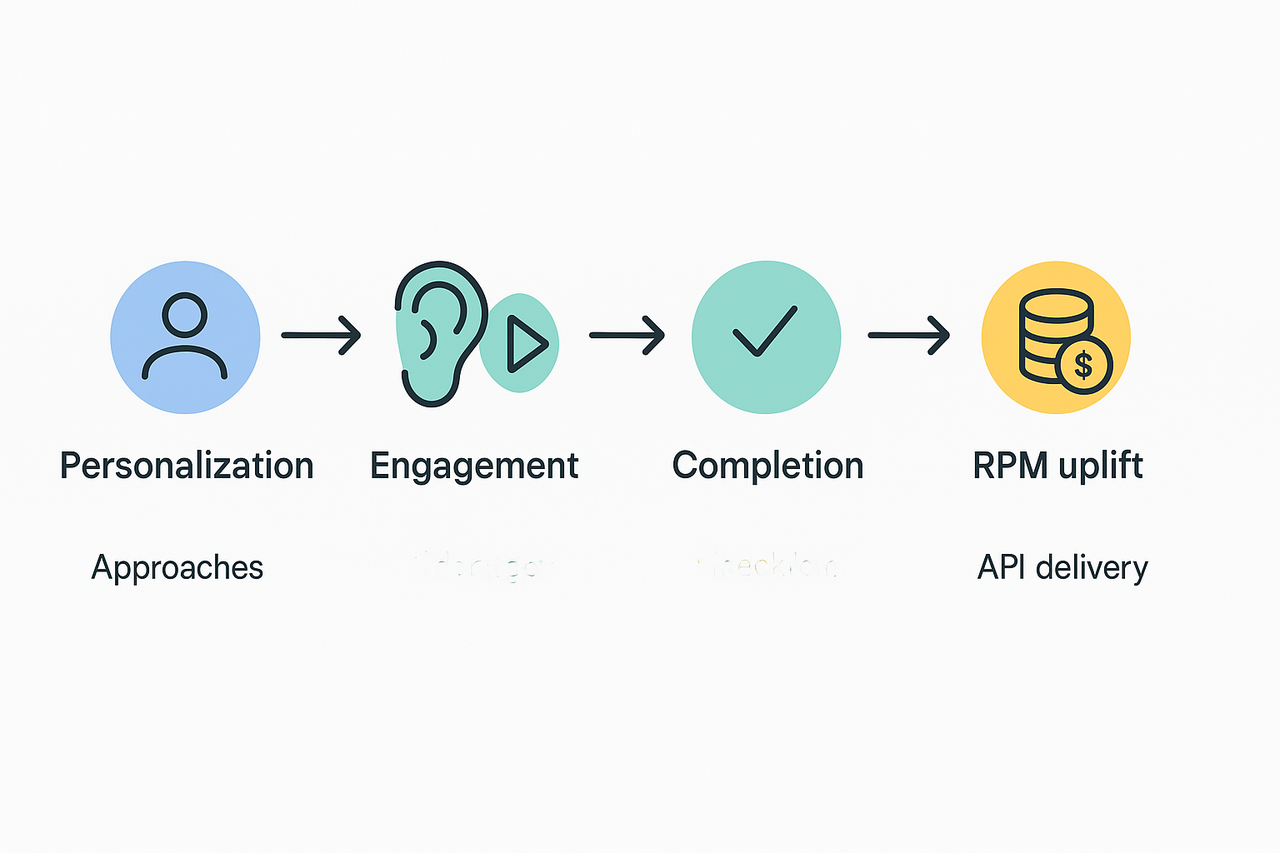
FAQ — Common questions advertisers ask about AI voice ads
-
How AI Voice Ads Work: Are AI voice ads legal and allowed on ad platforms?
Advertising rules vary by platform and country. You should confirm platform policies, disclose when using cloned voices, and get legal signoff before scaling. For a quick check, run a small test campaign.
-
Are AI voice ads realistic enough for broadcast-quality creative?
Yes, modern TTS and cloning sound natural when you pick high-quality voices and use performance styles. Listen to platform demos and A/B test voices against human reads.
-
How does voice cloning work for AI voice for ads?
Cloning uses source audio plus consent to reproduce a voice. Upload a sample, train the model, and preview clones. Try the cloning demo or start a 3-day DupDub free trial to test it.
-
Supported file formats for AI voice ads?
Export common ad formats: MP3 or WAV for audio, MP4 for video, and SRT for captions. Match bitrate and length to your ad platform specs.
-
Are AI voice ads compatible with programmatic and social ad buys?
Most platforms accept audio assets, but check specs and policy. Run a controlled programmatic A/B to measure RPM and engagement.
-
How should I budget and price-test the best AI voice for ads?
Use credit or seat pricing, factor cloning and localization costs, and pilot with A/B tests that track RPM uplift. Start small, measure, then scale.
-
What next steps should my team take?
Run a cloning demo, export sample files, and set up an RPM-focused A/B test with clear KPIs. Keep legal and accessibility checks in your checklist.

